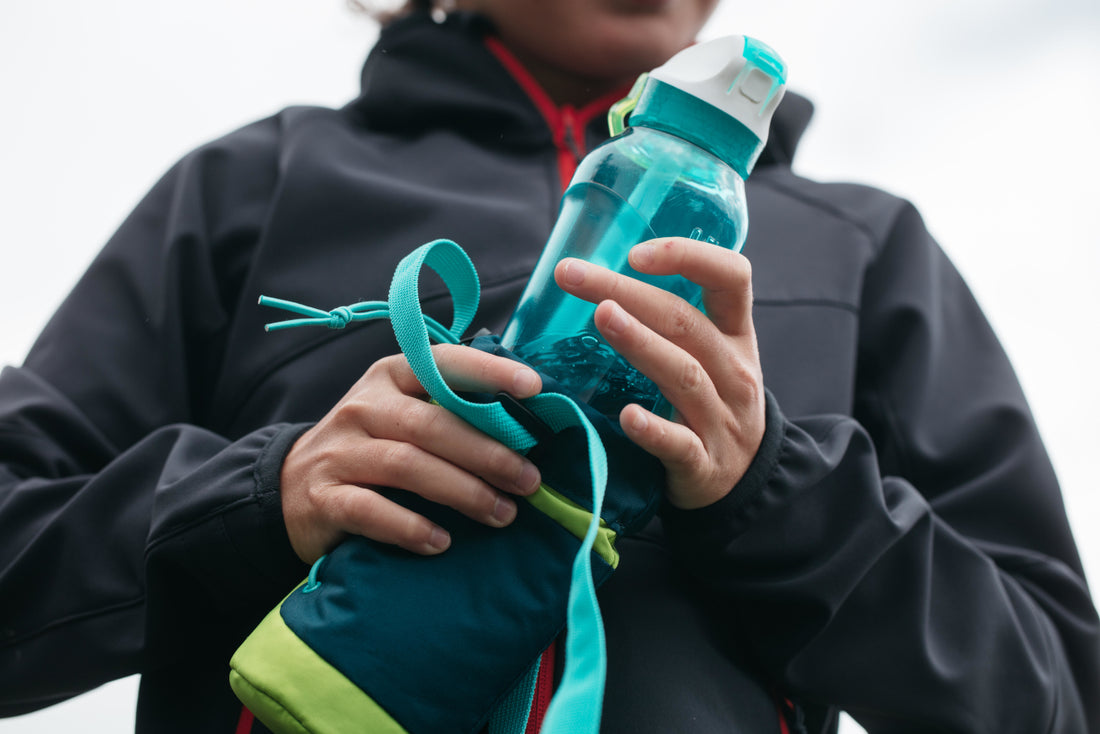An adult loses 2½ liters of water on average per day. Our body is constantly eliminating water or water vapor through the kidneys, intestines, lungs and skin.
This loss of water must be replaced by the food and drink we take in. Given that food provides about 1 L of water, liquids must provide the other 1½ liters. The ideal liquid is, of course, water.
Your needs increase with the ambient temperature, dry atmospheres (this is the case in the mountains) and, particularly during physical activity.
Don't wait to feel thirsty before drinking
Our body cannot create water reserves. This is why I recommend drinking regularly. However, don't wait to feel thirsty before drinking as this is not a good indicator of your level of hydration. The feeling of thirst occurs when the body is already dehydrated by at least 1% of the weight of the body.
When hiking, drink regularly!
Physical exercise causes the body temperature to rise. To allow this body heat to escape, the body uses a cooling system: perspiration. 80% of the excess heat is eliminated by this very efficient system.
The water lost through perspiration is between 0.5 and 1 L per hour. This can rise to up to 3 L or even more, depending on the weather conditions and the intensity of the hike. As you can see, it is very important to replace these losses during physical exercise when we know that dehydration is one of the primary causes of fatigue and, hence, a drop in performance. Drink at least 0.5 L of water or drink per hour of activity.
Drink appropriately
- For a walk of less than one hour, all you need is water.
- For longer walks, some carb intake is needed to prevent hypoglycemia and a corresponding drop in energy. An isotonic drink is ideal in this case to fulfil the needs associated with the physical activity. Fizzy drinks and energy drinks should be avoided as they contain too much sugar and speed up dehydration.
Make sure that your water or drink is not too cold as this can cause gastric problems. The ideal temperature is in the region of 59°F
Remain alert and react to the first signs of dehydration
The main signs of dehydration are:
- A feeling of thirst;
- An increase in the heart rate;
- A drop in arterial blood pressure;
- A drop in performance.
Dehydration begins with a feeling of fatigue and weariness while walking. The next stage of dehydration involves feeling very thirsty, having heavy legs, being out of breath and muscle and tendon pain that can lead to injuries. If needed, don't hesitate to get medical advice.
















